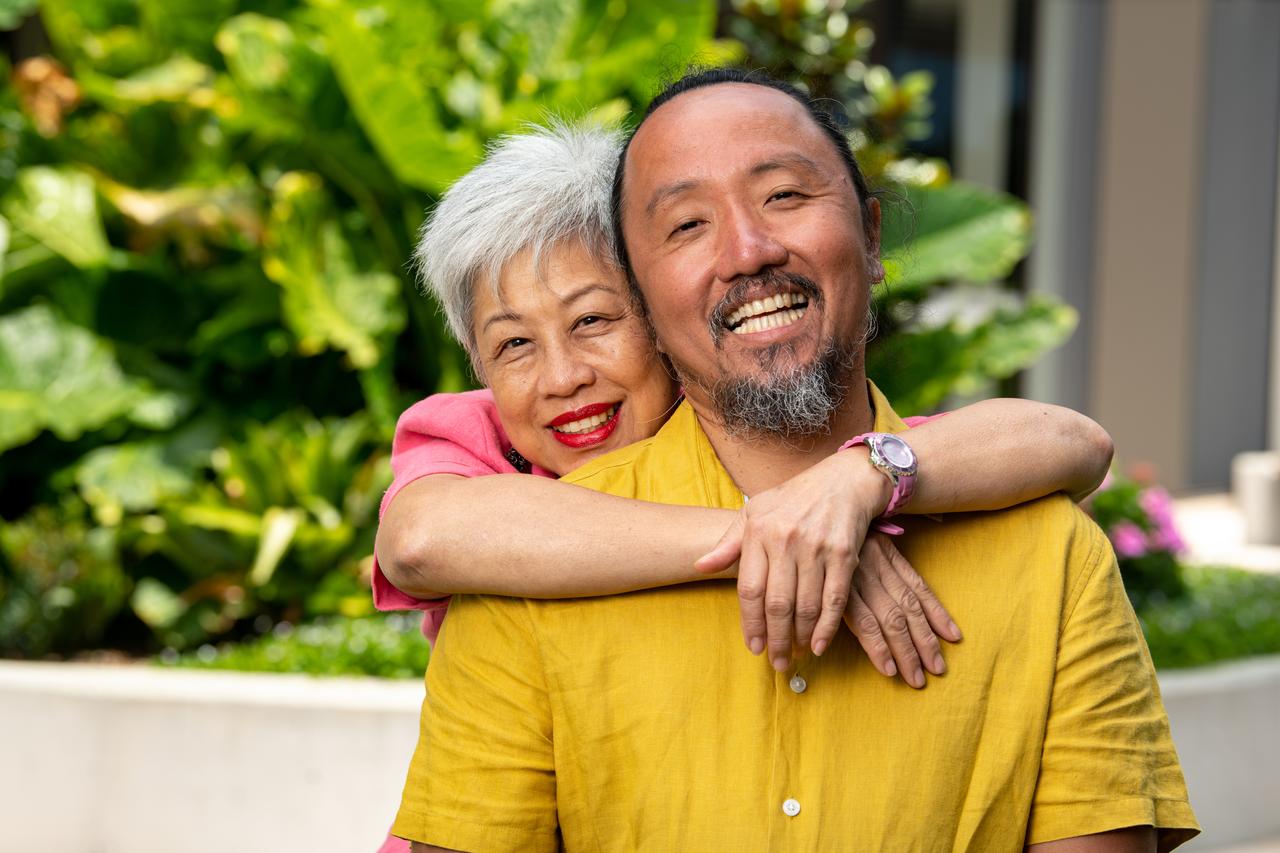- Patients
- Treatment options
- Radiation therapy
- Gamma knife

Gamma knife radiosurgery
Discover more about Gamma Knife radiosurgery, and its use as a form of radiation therapy treatment.
What is Gamma Knife?
Gamma Knife radiosurgery is a stereotactic radiosurgery (SRS) technique for tumours, as well as other abnormalities that can develop in the brain. The Gamma Knife is a radiation therapy machine that can deliver large doses of precisely targeted radiation, minimising radiation to the surrounding healthy brain tissue.1
How does Gamma Knife work?
Who is eligible for Gamma Knife radiosurgery?
Gamma Knife radiosurgery is used to treat a variety of brain disorders. Your treatment team are neurosurgeons and radiation oncologists, radiation therapists, physicists and nurses with specialised training in the treatment of neurological conditions, as well as other healthcare professionals.1
The team will work together to decide if this is an appropriate treatment option for you after careful evaluation of your condition, ensuring you are eligible based on all clinical circumstances.
Eligible conditions may include (but are not limited to):1
- Brain metastases
- Meningiomas
- Pituitary adenomas
- Acoustic neuromas
- Arterial venous malformations
- Trigeminal neuralgias
Gamma Knife may not be suitable if:1
- The treatment area is too large
- The lesion that needs treatment is too close to important critical structures in the brain.
Benefits and risks of Gamma Knife
Gamma Knife helps to enable the treatment of hard-to-reach brain tumours that may not be easily treated with conventional surgery.2
SRS may have benefits over conventional whole-brain radiation therapy. By limiting radiation to the surrounding healthy brain tissue, SRS may offer a reduction is side effects experienced with whole-brain radiation.3
You should be aware that radiosurgery is a serious medical treatment and comes with risks and side effects that should be discussed with your doctor.
What usually happens during Gamma Knife radiosurgery?
If your treatment team decides that Gamma Knife is right for you, you will likely go through the steps below.
Your Gamma Knife treatment is tailored to you. Planning your treatment is an important process that usually happens at an outpatient treatment centre.
- You’ll be fitted with a light-weight head frame to help improve the accuracy of your radiosurgery and to keep your head still during treatment. The frame will be fitted on the same day as your treatment4
- Your consultant will inject local anaesthetic into four places on your head. Once the areas are numb, they’ll attach the frame to your head with four pins. Fitting of the head frame will take about 5–10 minutes. The head frame may cause some discomfort, but you should get used to this quickly4
- Most patients will have a magnetic resonance imaging (MRI) scan on the day after the frame fitting, however some may have the MRI ahead of the frame fitting. The MRI will help your treatment team accurately direct the radiation beam during treatment and set the best dose according to your tumour’s position, size and shape4
- Before your MRI, you may be injected with a special dye called a contrast agent, which helps show certain structures on the more clearly on the scan4
- Some people may also need also need a computed tomography (CT) scan, with the head frame on – your treatment team will let you know if you need this
- Overall, the planning scans may take around 30 minutes.4 After your scans your treatment team will need to analyse the scans using a specially designed computer system, which may take a few hours
- While you’re waiting, you’ll be given something light to eat and drink, and you can watch TV, read, or chat with a friend or relative. You will keep your head frame on
- After the planning is complete, a member of your treatment team will take you to the Gamma Knife treatment room. You’ll be helped into position on the treatment couch and your head will be held in place with your head frame4
- When you’re ready, your treatment team will leave the room, but you’ll still be able to talk to them throughout the treatment via an intercom. The treatment itself if similar to having a scan4
- You won’t be able to feel the treatment and the treatment time will vary according to the size, location and number of target areas
- When the treatment has finished, your treatment team will come back into the room and help you off the couch
- The head frame will be removed and you will return to your room for a short period of observation before you will be ready to go home, most patients return home within a couple of hours following treatment4
- You may also feel some discomfort where the frame was attached to your head after your treatment has finished and the local anaesthetic has worn off4
- The areas where the pins were attached should heal within 1–2 weeks4
Depending on the indication for which you are being treated, our doctors will determine your follow up schedule which may include a follow-up MRI. A member of your treatment team will call to check on you within a week following your treatment.
Potential side effects of cancer treatment
All cancer treatments may have side effects. The type and severity of side effects will vary between individuals, and the risk may be affected by your general health, other treatments you've had and the targets to be treated. You can ask your doctor for detailed information about the side effects which you may experience with any treatment recommended for you.
It’s important that you attend your follow-up visits and scans so any issues can be identified and treated as soon as possible.
Find out more
Enquire now to for more information about Gamma Knife radiosurgery.
Read next

Our centres
In Australia, we have more than 40 oncology centres in metro and regional Queensland, New South Wales, Victoria, South Australia, and Western Australia.

Our doctors
Our experienced, specialised doctors offer bespoke, dedicated care aiming to provide the best possible clinical outcomes.

Radiation therapy for cancer
Radiation therapy uses high energy X-rays or other particles to treat cancer and can be used at all stages.
- Desai R and Rich K. Mo Med 2020; 117(1):33–38.
- Tomoyuki K et al. Neurol Med Chir (Tokyo) 2010;50:737–48.
- Brown P et al. JAMA 2016; 316(4):401–409.
- NHS. University College London Hospitals. What to expect during Gamma Knife surgery. Available at: https://www.uclh.nhs.uk/our-services/find-service/neurology-and-neurosurgery/stereotactic-radiosurgery-services/what-expect-during-gamma-knife-surgery (accessed February 2024).

You are leaving our website
You are now leaving our website. GenesisCare do not control this content and therefore are not responsible for its accuracy or reliability.
Disclaimer:
This website is provided for information purposes only. Nothing on this website is intended to be used as medical advice, or to diagnose, treat, cure or prevent any disease. It should not be used as a substitute for your own health professional's advice. Any medical procedure or treatment carries risks. Before proceeding with treatment, you should discuss the risks and benefits of the treatment with an appropriately qualified health practitioner. Individual treatment outcomes and experiences will vary.


